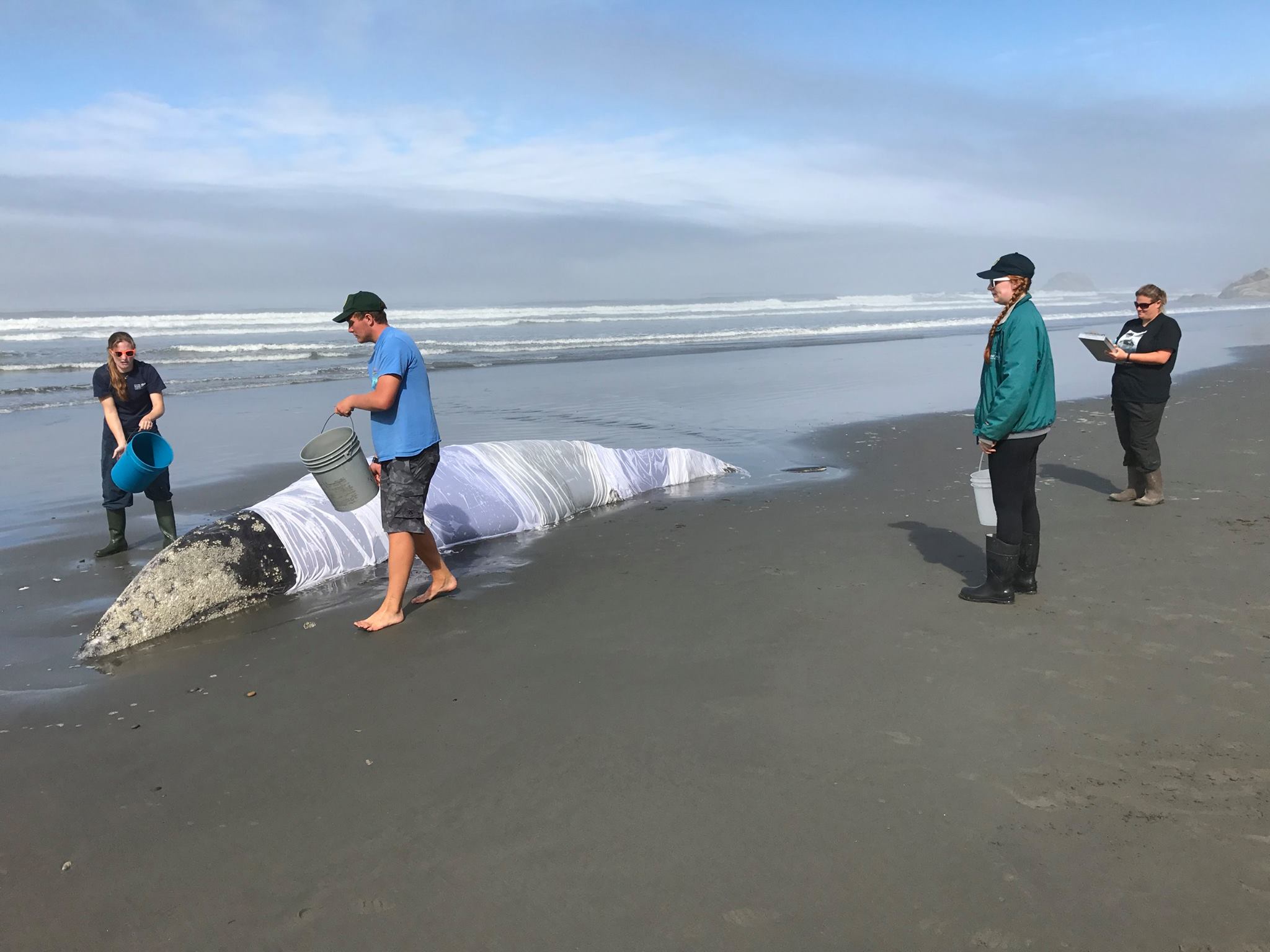
A juvenile whale that was beached off of a Grays Harbor was rescued/returned back to the water after rescuers worked 3 days to keep the whale alive.
A pulley system rigged up in the nick of time helped the team to maneuver the whale into the surf at high tide at 10:19 p.m. and then, suddenly, the whale was gone!
Rescue effort frees whale stranded in Olympic National Park
A rescue effort during high tide late Friday night freed a young gray whale that had been stranded on a remote beach in Olympic National Park and Olympic Coast National Marine Sanctuary for about three days.
Responders from NOAA Fisheries’ West Coast Marine Mammal Stranding Network and Olympic National Park fashioned a harness around the whale linked to pulleys anchored lower on the beach and on the shore. Experts from Cascadia Research Collective, SR3, and the Washington Department of Fish and Wildlife led responders in using the pulley system to turn the whale seaward and pull it into deeper water.
The team also dug a shallow trench around the whale to help float and position the whale as the tide came in. They had hoped the especially high tide at 10:19 p.m. would give the 24-foot whale its best chance of returning to the open ocean.
“A cheer went up in the darkness and the assembled team stood shining lights into the darkness and mist, stunned at the apparent turn of events and success,” Calambokidis recalled.
Experts estimated the whale as one to two years old, and in fair condition. Although the whale was earlier described as female, it is now believed to be a male. The whale remained alert throughout the stranding and tried aggressively to free itself several times during earlier high tides.
Historically it is unusual for large stranded whales to be successfully freed. The National Park Service and NOAA Fisheries thank the many volunteers and staff who assisted in the response.
“Whales are not designed to be out of water so their organ systems rapidly decline when beached and medical care is essential,” said Lesanna Lahner, wildlife veterinarian from SR3, a marine mammal rescue organization. “To help him over these hurdles, supportive medications such as B vitamins and anti-inflammatories were administered.”
Lahner and Washington Department of Fish and Wildlife marine mammal biologist Dyanna Lambourn administered the medications.
NOAA Fisheries removed gray whales from the endangered species list in 1994 and estimates the population that migrates along the West Coast of the United States at about 20,000. Gray whales typically travel north from their Mexican breeding grounds to Arctic feeding grounds in spring and early summer.
Gray whales are unusual among whales in that they regularly feed in shallow waters. Several gray whales have been seen in recent months feeding in the vicinity of the stranding, which is in Olympic National Park and Olympic Coast National Marine Sanctuary.
Rescuing large whales is inherently dangerous for both the animals and responders, and members of the marine mammal stranding network are highly trained in marine mammal biology and health, safety protocols, and emergency response procedures. NOAA Fisheries reminds the public not to approach stranded marine mammals and instead report them to the West Coast Marine Mammal Stranding Network hotline at 1-866-767-6114.






